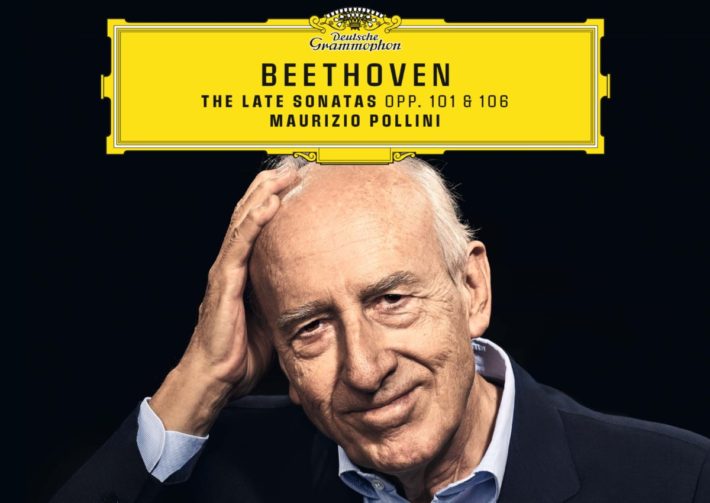Maurizio Pollini’s complete Beethoven Sonatas cycle has been a nearly 40-year journey that started back in the 70s with a recording of the last 5 sonatas (which has since become an acclaimed landmark). Though the final installment was released in 2014, he has revisited certain sonatas along the way, including Ops. 109-111 in 2019 and, of course, Op. 101 and Op. 106 in this newest recording. The Hammerklavier in particular calls to mind several other established performances besides his own: among them are Richter (1976), Gilels (1983), Brendel (1964 or 1996), and Uchida (2007).
Pollini opens Op. 101 charmingly, with an ebb and flow to his phrases that puts us at ease (although it feels a little bit more chilly than Igor Levit’s version, which I love for its sensitivity of tone). The moment at 1’21” sees a somewhat acute lurch forward but it’s still within reasonable context of pushing the momentum forward. The second movement has a welcoming energy and decent rhythmic feel, with the pianist tying lines together through the recurring dotted rhythm motif. These rhythms could use more clarity, however (refer to Helene Grimaud’s DG recording for its excellent articulation and multi-layered, vibrant textures). The A minor Langsam (track 3) is at its best and most symphonic in the broader moments like the effective swell we hear starting at 0’37”.
As for the Hammerklavier, the opening notes are elemental in setting the very character of a particular interpretation. That said, there’s too much pedal present (or maybe overpowering reverb?) that detracts from the crispness of the martial rhythms so integral to the authority of opening theme; I also found that the two note phrases which follow careen out of control for an unsettling feel—a far cry from the 1977 account which masterfully balances precision of articulation and rhythmic structure with an edge-of-the-seat drive. In short, I was rather taken aback by how uncharacteristically messy much of the movement sounds.
Related Posts
- Review: Beethoven – “Hammerklavier” Sonata, Eroica Variations – Aimard
- Review: Beethoven – Complete Piano Sonatas – Fazil Say
- Review: Beethoven – The Last Three Piano Sonatas – Sunwook Kim
The slow third movement is a bit more reminiscent of the Pollini we know: a nice, round tone and well-calibrated chords again give the interpretation an orchestral feel. That said, something is missing in its depth of emotion; I felt a want for a greater sense of reflection and profundity that we hear in Uchida’s much more introverted yet emotionally arresting performance. The runs in the Finale (track 8) suffer from the same clarity and control issues we heard in the opening Allegro, though slower moments like 7’28” are lovely in their even voicing and pleasantly long lines.
The sound engineering regrettably further detracts from the performances, especially in the Hammerklavier; how much of that is attributable to the venue itself (Munich, Residenz, Herkulessaal) is up for discussion but at the very least, the recording engineers could have helped mitigate the muddy effects. Rebecca Franks’ liner notes, however, incorporate interesting historical and performance context, Pollini’s insights on the works, and his own journey through the Beethoven cycle.
Pollini undoubtedly has many excellent recordings to his name and his rise to the challenge of re-recording these hefty sonatas is to be commended. However, we don’t get to hear him at his finest this time around. With an abundance of top-notch performances out there for both sonatas, listeners are best off exploring these other options.

Beethoven – Piano Sonatas Opp. 101 & 106
Maurizio Pollini – Piano
Deutsche Grammophon, CD 4863014
Beethoven Late Sonatas on Amazon
Read more classical music reviews or visit The Classic Review Amazon store
Follow Us and Comment:
[wd_hustle id=”HustlePostEmbed” type=”embedded”]











